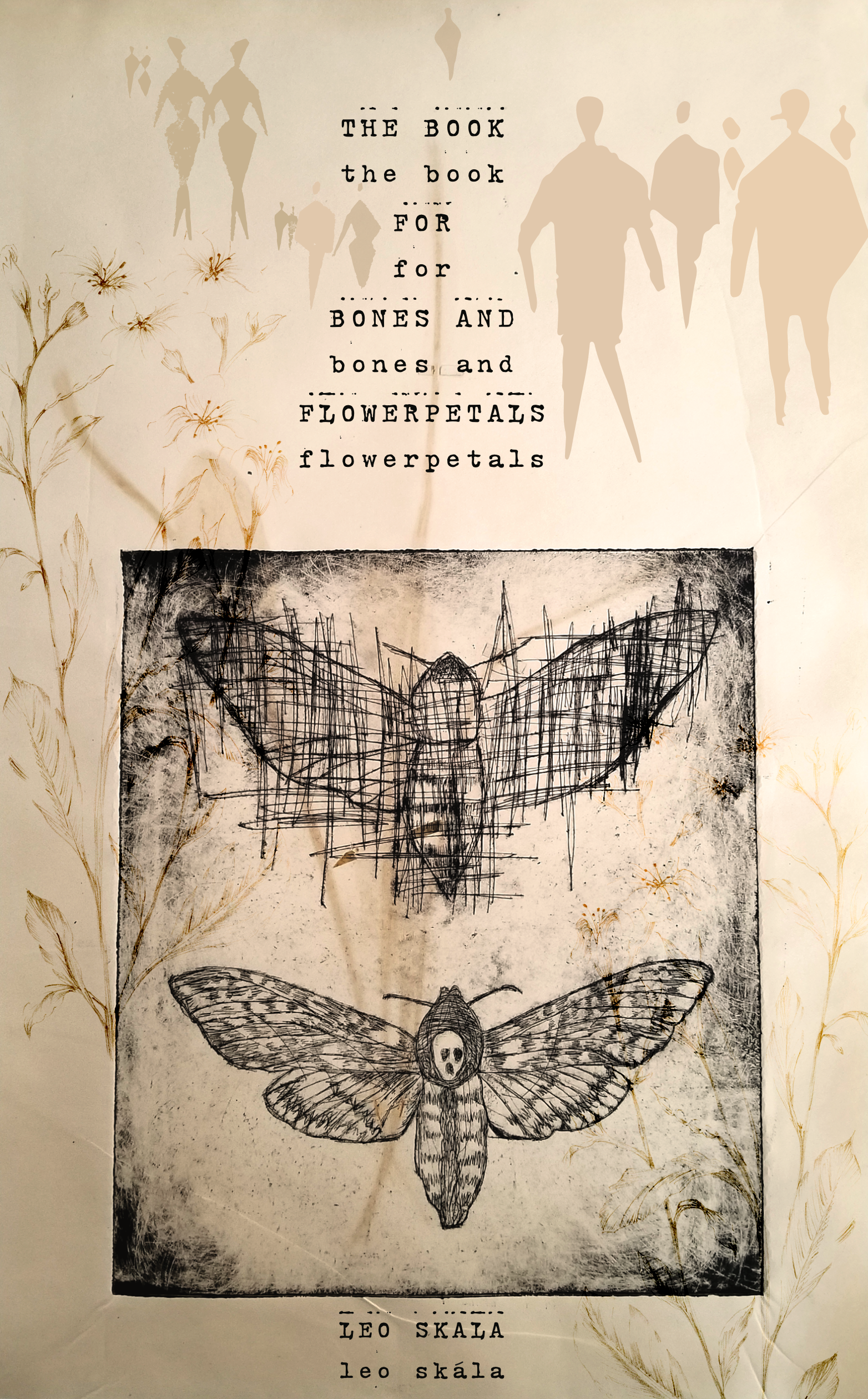I was approached by a writer friend in September 2020 to create a cover for his upcoming collection of poems, called The Book for Bones and Flowerpetals.
I met Leo several years ago while he was doing a bookbinding apprenticeship at Ars Obscura in Seattle, WA. Nowadays, he roams the world as a traveling typewriter poet, meeting folx from all walks of life and creating small pockets of vulnerability and intimacy with each piece of magic he crafts.
photo courtesy Leo's Instagram, @writelighthouse
The Book for Bones and Flowerpetals is a collection of poems Leo began writing with his typewriter on streets across the world.
About the book, he says, "This is a small bouquet pulled from a beautiful project involving a typewriter, a willingness for sudden intimacy or surprises, for friends disguised as strangers, and a simple sign which read 'Ask me for a Poem'... This typewriter seemed to be a portal for folks going through intense transition."
This focus on transition, change, metamorphosis, beginnings and endings, motion and so much more aligned well with a printmaking series I completed only a few months before I'd met Leo, called On Flowers, a Self Portrait.
Leo was immediately drawn to this image of two moths dry-point printed on top of paper from the Drury herbarium that was used in the late 1800s to press local flora.
With this imagery in mind as the base for the book cover, I set out to work!
I searched for the right typeface to capture the physical artistry Leo embodied while writing his typewriter poems. I wanted something with some complexity to it, and knew that in the end, I would likely settle on a typewriter font.
After showing these options to Leo, he immediately was drawn to "Hammerkeys" by Matt Lyon, a typeface that embodies the double strike of the hammer of a typewriter in upper and lower cases.
Leo also hoped to represent the people he interacted, and who these poems were written for, in imagery on the cover.
I decided to create several pictorial representations of the human form using a brush that produced something between watercolor, chalk, and oil pastel. I also used simple line drawings of botanical scientific illustrations available on the public domain.
After a few rounds of adjustments, the final cover came together! The overlay I applied to the floral drawings changes color and intensity when compressed to different file types, a happy accident that produced two final versions of the cover.


This was such a fun project that allowed me to use some of my fine art imagery to represent a breathtaking book of poetry. I enjoyed this collaboration and would love to do more work like this in the future!
